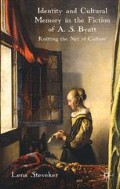Abstract
As well as describing female identity as caught between relationality and separateness, Byatt’s novels also problematize the issue of female autonomy. Although autonomy must not be confused with identity, it is of relevance in identity discourses, since only people who successfully engage in the processes of identity construction can achieve autonomy as individuals (Straub, 2004, p.288). Like identity, autonomy1 is embedded within a social context and is based on intersubjective recognition (Straub, 2004, pp.288-9). As Straub explains, autonomy not only remains of necessity partial, but it can also be endangered by the specific processes of socialization and enculturation on which its realization depends (2004, p.288). If we consider the aspect of gender, such a concept of autonomy raises several questions: How can female autonomy be realized if patriarchy subjects all women to similar processes of socialization that leave little or no space for individual development (Silke, 2002, p.183)? If ‘society shapes self’ (Stryker, 1992, p.872) and if patriarchy subordinates women to men (Brooker, 2003, p.188, Feldmann & Schülting, 2004b, p.513), how can women achieve individual autonomy?
Access this chapter
Tax calculation will be finalised at checkout
Purchases are for personal use only
Preview
Unable to display preview. Download preview PDF.
Notes and References
Referring to the notions of independence and self-determination, individual autonomy is a conception of liberal humanism which has been severely criticized by poststructuralist theorists (Brooker, 2003, p.241). For example, Michel Foucault and Jacques Lacan argue that individual auton-omy does not exist since the individual — or, to use Foucault’s term, the subject — is determined by the discourses of power that pervade each society (Clarke, 1993, pp.318-20) as well as by her/his unconscious desires, which escape the individual’s control (Jirgens, 1993, pp.396-9). In the context of individual identity formation, autonomy is nowadays conceptualized as necessarily partial or ‘de-centred’ (Straub, 2004, p.290) since it moves between the two poles of absolute autonomy and absolute heteronomy, neither of which can be realized socially (Straub, 2004, pp.289-90).
In her introduction to the 1991 Vintage edition of her first novel The Shadow of the Sun, Byatt even goes so far as to assert that not only the three texts mentioned above, but all of her novels focus on female art, female thought and female vision (Byatt, 1991, p.xiv). For an analysis of The Shadow of the Sun and The Game as female artist novels cf. Franken, 2001, pp.33-81.
For the tradition of this myth and its literary development cf. Frenzel, 1963a and also Lundt, 1991, pp.41-184.
For example, Campbell, 2004, pp.112-21; Chinn, 2001; Franken, 2001, pp.93-8; Maack, 1999; Schmid, 1996a, pp.120-4.
For more detailed discussions of the parallels between Maud, LaMotte and Melusina cf. the bibliographical information provided in the preceding footnote.
Schmid characterizes Christabel as a woman poet living in an ‘ivory tower’ (Schmid, 1996a, p.122), yet she neglects to discuss the spatial implication of this metaphor.
Roland is repeatedly described as boring, weak and unsuccessful (P, p.128, p.141, p.426). He thus differs from other male characters in Possession such as Mortimer Cropper, Fergus Woolf, Euan MacIntyre, and James Blackadder, who are characterized as stereotypically successful and assertive men of the late twentieth century.
Byatt’s tetralogy covers the years 1952 to 1980, but it does not do so in a linear narrative. The Virgin in the Garden is divided into two time levels, that of the prologue (1968) and that of the main text (1952–53). Still Life opens with a prologue set in the year 1980, while the main body of the text covers the years 1953–57. As Jane Campbell points out, the prologue to Still Life ‘is the chronological end of the quartet; Babel Tower and A Whistling Woman (both without prologues) bring the story only to 1970’ (Campbell, 2004, p.68).
Uhsadel claims that Frederica and Stephanie represent two diametrically opposed models of female life (2005, p.94).
This idea is symbolized by the women straining themselves to reach the display of bridal crowns (VG, p.252) which, when placed upon their heads, afford them a ‘new self, new world’ (VG, p.253).
Copyright information
© 2009 Lena Steveker
About this chapter
Cite this chapter
Steveker, L. (2009). Female Autonomy. In: Identity and Cultural Memory in the Fiction of A. S. Byatt. Palgrave Macmillan, London. https://doi.org/10.1057/9780230248595_6
Download citation
DOI: https://doi.org/10.1057/9780230248595_6
Publisher Name: Palgrave Macmillan, London
Print ISBN: 978-1-349-36561-6
Online ISBN: 978-0-230-24859-5
eBook Packages: Palgrave Literature & Performing Arts CollectionLiterature, Cultural and Media Studies (R0)

